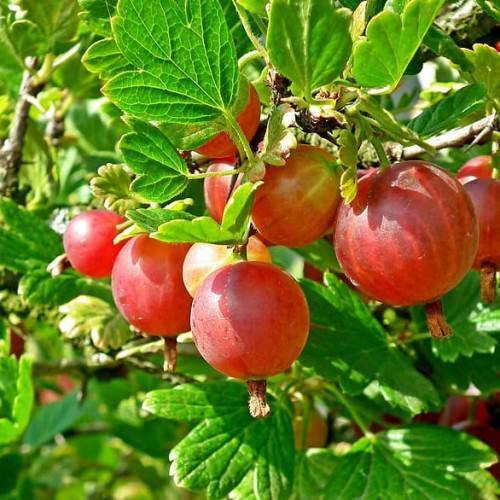
gooseberry
Ribes 'Poorman'
Cycle:
Perennial
Watering:
Average
Hardiness Zone:
4 - 6
Flowers:
Flowers
Sun:
Full sun,part shade
Fruits:
Fruits Ready In Fall
Edible:
Yes
Leaf:
Yes
Growth Rate:
Low
Maintenance:
Moderate
Drought Tolerant:
Yes
Thorny:
Yes
watering
Gooseberry (Ribes 'Poorman') should be watered deeply and thoroughly once a week. Depending on the temperatures, soil type, and growing conditions, the plant may need a little more or a little less water per week. When you water, give the soil a good soaking so that moisture reaches the root system. During hot, dry conditions, you may need to water your gooseberry plant more frequently. If the leaves begin to wilt or droop, the plant may need watered immediately. Avoid overwatering, as the plant can easily suffer from root rot. Always check the soil for moisture before watering, and water the plant only if the top inch is dry.
sunlight
Gooseberry (Ribes 'Poorman') requires full sun for optimal growth and flowering. This means that the plant should receive at least 6 hours of direct sunlight per day throughout the growing season. Generally, in the northern hemisphere, this should occur between mid-April and mid-September, although this can vary somewhat depending on where the gooseberry is located and the climate in the region. In areas with extremely hot summers, it may be beneficial to provide a little afternoon shade to ensure the berries don't get overripe before they are able to be harvested. During the winter months, the gooseberry will still benefit from some sunlight, but it should be filtered or dappled light to prevent the plant from getting too much sun which can lead to frost damage or sunscald.
pruning
Gooseberry (Ribes 'Poorman') should be pruned at the beginning of spring, once the last frost has passed. Pruning helps to remove any damaged wood and divides the branches into manageable sections, allowing more sunlight and air to reach the centre of the plant. When pruning gooseberry, only remove 1/3 of the older canes, as these are typically the most productive canes. Prune any crossing or damaged canes, and also remove any extra, spindly growth which may be shading the centre of the plant. New canes should be left thick and short, as they will form a strong, upright structure in the coming years. Gooseberry can also be pruned in the summer, to replenish the vigour and harvest of the plant.
